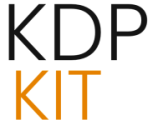
Artificial Intelligence: The Author’s New Invisible Co-Pilot
Artificial Intelligence (AI) and machine learning are not science fiction concepts for authors in 2025; they are functional, integrated components of the modern self-publishing workflow. The impact of these technologies is being felt across the entire production spectrum, from the first draft refinement to the final visual presentation.
AI-powered solutions are now readily available to take over demanding, time-consuming tasks that once necessitated expensive outsourcing. This automation includes incredibly sophisticated tools for grammar and style checking, accelerated automated proofreading, and even providing preliminary developmental feedback on structure and pacing. This has dramatically compressed the editing phase.
But AI’s influence extends beyond the text itself. It is actively democratizing the crucial, often expensive, design process. According to the CEO of a contemporary publishing technology firm, authors who once had to settle for the most basic, platform-provided cover templates are now leveraging advanced AI systems to generate unique, professional-grade designs from scratch. This means an author, with minimal graphic design expertise, can create a visually competitive book jacket that stands up against traditionally published titles. This control over the aesthetic is a massive step up from the early days of digital self-publishing.
Recent data indicates this adoption is widespread: surveys released in 2025 suggest that nearly 40% of writers now incorporate AI tools into their workflow, primarily for these efficiency gains. The overall effect is an environment where the creator maintains comprehensive oversight and control, making the leap from a completed manuscript to a market-ready product faster and more accessible than ever before. Learn more about leveraging these tools in our deep dive on AI tools for manuscript refinement.
Where AI is Shaving Weeks Off Your Timeline
The speed AI offers is a direct competitive advantage. Consider these key application areas:
- Metadata Optimization: AI tools analyze current market trends to suggest the most effective keywords, categories, and descriptions, ensuring your book gets seen by the right eyes.
- Automated Editing: While human oversight is still vital for nuance, AI catches mechanical errors and stylistic inconsistencies at lightning speed, allowing human editors to focus on *deep* structural improvements.
- Cover Generation: Using machine learning algorithms to analyze current design trends, authors can rapidly generate unique, on-trend covers, instantly competing in crowded online marketplaces.. Find out more about How AI tools streamline self-publishing workflow.
Social Media Ecosystems: Direct Reader Connection Platforms
The third pillar supporting the independent author is the profound and sophisticated integration of social media into the career lifecycle. Authors are no longer passive recipients of marketing efforts; they are active distributors and community leaders. The old dependency on a publisher’s marketing department to “discover” them or “push” a book to the masses has been rendered largely obsolete.
Platforms like BookTok (the book community on TikTok), specialized Instagram communities, and subscription newsletters on platforms like Substack have become the primary avenues for discovery, community building, and direct-to-consumer sales. The modern author is expected to be a personal brand—sharing the creative journey, hosting live Q&A sessions, and offering behind-the-scenes glimpses of their work. This direct access bypasses traditional media filters entirely.
The data from 2025 confirms this is not a minor channel—it is the channel. The #BookTok hashtag has surpassed 200 billion views. More critically for the bottom line: 45% of TikTok users report purchasing a book after seeing it on the platform. Industry experts predict that by the end of 2025, these social channels will drive 50% of all fiction book discovery. A single viral moment can translate into an immediate, massive sales spike, often causing a 600% increase in a book’s sales figures.
This organic driver of success, fueled by genuine reader enthusiasm, is far more reliable than the costly, broad-spectrum advertising campaigns that traditionally dominated book launches. The relationship is now a dynamic feedback loop—the author publishes, receives instant critique and praise, and can incorporate that sentiment into subsequent work, ensuring content remains perfectly aligned with reader expectations. For a guide on how to build this crucial presence, check out our piece on building an author platform.
Case Studies in Self-Made Literary Success
The theoretical benefits of this technological trinity are powerfully validated by concrete, quantifiable success stories emerging from the market in 2025, proving that high quality and mainstream appeal can now originate entirely outside established houses.
The Anthology That Defied Expectations: A Case Study
A striking example illustrating the power of this new paradigm is the self-published summer romance poetry anthology, “Tomato Cup Ramyeon.” This collection, created by 19-year-old Cha Jeong-eun and published via a POD service, achieved a staggering level of mainstream success in South Korea. In the first half of 2025, this anthology secured a position as the third best-selling poetry book across one of Korea’s major local retailers, Kyobo Book Centre.. Find out more about Using print on demand to eliminate book inventory risk guide.
This is not the story of a seasoned professional or a massive corporate machine. It is the story of a young creator who chose the path of independence because she desired the entire process—from conception to final print—to remain profoundly personal. Her success proves that niche, emotionally resonant content, especially that tailored to specific generational tastes, can achieve chart success when distributed directly and efficiently through these modern tools. This is the democratization in action.
The Legacy of the Indie Trailblazers
It is useful to remember that the *spirit* of independent publishing is not new; only its tools have evolved. Iconic works that defined literary eras began their lives outside the traditional system. Walt Whitman’s foundational work, “Leaves of Grass” in 1855, Beatrix Potter’s beloved “The Tale of Peter Rabbit” in 1901, and the modern phenomenon E.L. James’s “Fifty Shades of Grey” in 2011 all started as self-published ventures. More recently, works like Baek Se-hee’s “I Want to Die but I Want to Eat Tteokbokki” in 2018 also found their initial footing independently.
These historical markers offer vital context: the challenge for these trailblazers was never the quality of the writing, but the prohibitively high cost and logistical complexity of duplication and distribution—barriers that today’s POD technology has effectively lowered to near zero. The key difference is that today, an author can achieve the same distribution efficiency that E.L. James eventually gained through a massive publisher, but on their first book.
From Niche Content to Mainstream Recognition
Many authors today are not aiming for a massive, one-size-fits-all audience. They are aiming to serve a highly specific community—a core fanbase—that established publishers might overlook due to perceived lack of mass appeal. For instance, authors are using self-publishing to convert existing, popular video content or specialized knowledge bases into cohesive written formats. Printing large quantities of such a book makes no business sense, but creating a small, personal run for dedicated followers is perfectly logical.
This approach prioritizes serving the existing, established audience over chasing speculative mass sales figures. The book becomes a physical artifact of a digital community, a tangible memento for dedicated followers. This focus on an existing, dedicated readership is a far more reliable path to sustainability than fighting for generalized shelf space, transforming niche engagement into reliable, long-term revenue. This concept is key to the discussion of building a sustainable author career.
The Structural Shift: Microscale Meets the Market in 2025
Industry observers are not viewing this phenomenon in isolation. Experts widely recognize this movement as part of a fundamental restructuring of the entire literary economy, moving power away from consolidated monoliths toward a highly distributed network of small, agile operations. This shift is structural, not just technological.. Find out more about Benefits of social media for direct author to reader connection tips.
The Industry Trajectory Toward Micro-Imprints
Book critics and industry analysts are noting the evolution of publishing is trending decidedly toward the “microscale.” This transformation is evident in the rise of “one-person publishers,” the proliferation of “independent imprints,” and, more recently, the explosive growth of “side-job and hobby publishing”. The industry is segmenting: large houses focus on guaranteed blockbusters, while the long tail of diverse, specialized, and experimental content is being captured entirely by independent authors and small digital entities.
This fragmentation allows for a much more nuanced and rapid response to shifting literary tastes—a speed that larger, bureaucratic organizations simply cannot match. The inertia that used to plague traditional houses is now the very thing that allows agile indies to capture market share.
Generational Shifts in Consumption and Creation
A significant driver of this microscale trend is the emergence of younger authors, particularly those from Gen Z and, increasingly, Gen Alpha, who are utilizing these tools to serve their immediate peer groups. The success of teen authors self-publishing for their own teen fanbases perfectly encapsulates this trajectory. These creators possess an inherent, unfiltered understanding of their audience’s desires—an understanding that an external editor or marketing executive might struggle to grasp fully.
They bypass the traditional system because they do not need its validation; they have an established platform and an existing, eager audience waiting for their next output. In a powerful testament to this trend in Korea, one major POD platform saw teens surpass authors in their 20s as the largest age group utilizing the service between January and October 2025. The next generation is not waiting for permission to publish.
Co-Evolution: The Symbiotic Reader-Author Relationship
This youth-driven trend highlights what one critic has termed a “co-evolution between Gen Alpha authors and their readers”. The relationship is no longer strictly one-way—author creates, reader consumes. Instead, it is a dynamic feedback loop. The author publishes a work, receives immediate, unfiltered feedback via social channels, and perhaps even incorporates that reader sentiment into subsequent chapters, stories, or entirely new works. This iterative process ensures that the content remains exquisitely aligned with the audience’s “increasingly delicate tastes,” making self-publishing the “most precise way to respond” to reader expectations.
The Economics of Autonomy: Royalties and Risk. Find out more about Comparing self-publishing royalty rates versus traditional publishing strategies.
While creative control is invaluable, the primary motivation for many writers making the leap to independence is the stark financial reality—the earning potential of the self-published route versus the traditional path.
The Royalty Multiplier: A Comparative Financial Analysis
One of the most compelling arguments for independence in 2025 is the dramatic difference in earning potential. Traditional publishing often yields royalties ranging from 2% to 15% on print and around 25% for eBooks—and these are only paid after a publisher recoups its advance. By contrast, self-publishing platforms frequently offer authors a share between 35% to 70% on eBooks and 40% to 60% on print sales (minus the per-unit printing cost).
This difference is staggering. For every dollar earned, the independent author can see up to four times the revenue compared to their traditionally published counterpart on the same unit sale. While the *average* annual earnings for indie authors might remain modest, the potential for top earners to reach six-figure incomes through smart series development and targeted social marketing is a powerful incentive that eclipses the often-stagnant advances offered to debut or mid-list authors in the established system.
Data Snapshot: Royalties in 2025
Metric Self-Published (via Major Platform) Traditional Publishing eBook Royalty Share 35% to 70% of net price Typically 25% of net receipts Print Royalty Share 40% to 60% of retail price (minus printing cost) Typically 2% to 15% of list price Upfront Payment None (Author pays production costs) Advance paid (must be recouped)
To see the direct impact on your earnings, utilize a royalty calculator tool comparing these models.
Bearing the Burden: Managing Upfront Investment
However, this elevated earning potential comes with a critical caveat: the financial risk is entirely transferred to the author. Unlike a traditional publisher who covers all costs—editing, design, printing, and distribution—the self-published author must invest in themselves.
There are inherent costs associated with hiring quality professional editors, commissioning bespoke cover art that meets 2025 design standards, and potentially running targeted digital advertising campaigns. Even with the low barrier to entry—where platforms charge nothing to list a book (only taking a cut of sales) and POD only requires covering the cost of the single printed unit—the initial outlay for professional polish remains the author’s responsibility. Success in this model demands treating the book not just as a piece of art, but as a small business venture requiring strategic capital investment.. Find out more about How AI tools streamline self-publishing workflow overview.
Control as the Ultimate Currency
Beyond the financial calculus, the intangible value of complete creative and strategic control is arguably the most prized commodity gained by bypassing the established hierarchy. This control manifests in two crucial areas: speed and artistic integrity.
Timeline Dictation: The End of the Publishing Waiting Game
In traditional publishing, once a contract is secured, authors often face an agonizingly long timeline, frequently waiting 18 to 24 months—sometimes longer—for a book to reach shelves. This inertia is disastrous for capitalizing on fleeting cultural moments or trends. If a topic goes viral on BookTok today, a traditional publisher may not have your response on shelves for two years.
Self-publishing obliterates this delay. An author can complete their manuscript, use AI tools to finalize the interior, secure a stunning cover design, and list the book for sale globally in a matter of weeks, or perhaps a few months. This speed allows authors to react instantly to viral moments or timely social commentary, ensuring their voice is heard when it is most relevant. This agility is a weapon in the modern content wars.
Vision Intact: Uncompromised Editorial and Design Choices
The creative friction inherent in traditional deals often leads to heavy-handed editorial decisions, title changes, or cover concepts that deviate significantly from the author’s original vision. For an author deeply invested in a specific narrative voice or thematic representation, these compromises can feel like a betrayal of the work itself.
Self-publishing means the author remains the ultimate arbiter of every creative decision. They choose the title, the interior formatting, the exact shade of the cover art, and the final price point—all decisions made to serve their artistic integrity, not a perceived sales metric from a committee room. This aligns perfectly with the younger generation’s focus on creative control in publishing.
Navigating the Expanded Production Pipeline. Find out more about Using print on demand to eliminate book inventory risk definition guide.
The logistical hurdles that once required an entire publishing house infrastructure are now managed through increasingly intuitive digital interfaces, further reducing the perceived difficulty of becoming a ‘publisher’ of one’s own work.
Democratizing Design: Custom Covers Without the Major Budget
The visual presentation of a book is critical for catching a potential buyer’s eye, especially in crowded online marketplaces. As previously noted, the proliferation of accessible design technology, often enhanced by machine learning, has empowered authors to move beyond cheap-looking, generic templates. This democratization means that authors can now commission, or even create themselves, cover art that is highly specific to their genre and tone, allowing their physical product to compete visually with traditionally released titles without incurring the massive overhead costs associated with hiring top-tier design firms.
The ability to create a visually stunning product independently is now a core component of the success equation. In 2025, simple, text-only or text-plus-image designs dominate top-selling listings, proving that clarity and genre signals are more important than overly complex artistry.
The Digital Shelf: Instant Global Listing Capabilities
Once production is complete, distribution is nearly instantaneous. Digital platforms allow a finished product—whether an eBook or a print file ready for POD fulfillment—to be listed simultaneously across major domestic and international online retail spaces. This global reach, achieved with a few clicks, stands in stark contrast to the months-long process required for traditional houses to negotiate and secure physical placement in various territories and brick-and-mortar stores.
The digital infrastructure ensures that the moment an author hits ‘publish,’ their work is potentially available to a worldwide audience, fulfilling the promise of a truly global marketplace for independent voices. The market itself is showing favor toward this distributed model.
The Evolving Definition of a “Published Author”
As the mechanisms of creation and distribution normalize, the cultural and professional status attached to the phrase “published author” is undergoing a necessary re-evaluation. The focus is shifting from the how to the what—from the prestige of the gatekeeper to the quantifiable metric of readership.
Fading Prestige, Rising Authenticity
The prestige once inextricably linked to receiving a contract from a “Big Five” publisher—a signal of external validation and quality assurance—is demonstrably eroding. While traditional publishing still offers benefits like securing major literary awards or guaranteed reviews in established media outlets, the market itself is increasingly validating authors based on direct reader interaction and sales figures, regardless of the initial point of entry.
For a new generation of creators, the authenticity derived from maintaining complete control and directly engaging their community holds a higher intrinsic value than the veneer of institutional approval. Success is measured by readership and influence, not by which house’s logo appears on the spine. Even authors who later sign with traditional houses often do so from a position of strength, leveraging their indie success—the *BookTok viral moment* that propelled them—to negotiate better terms, as seen with authors like Olivie Blake.
The Path Forward: Agility and Audience Cultivation
Ultimately, the overarching lesson from the 2025 self-publishing explosion is that the future belongs to the agile and the connected. While traditional houses remain relevant for specific types of large-scale projects or for authors prioritizing validation and upfront financial guarantees, the momentum is firmly with those who can adapt quickly and cultivate a loyal following. Success in this new literary frontier is less about conquering gatekeepers and more about mastering the tools of direct engagement, investing wisely in quality production, and remaining relentlessly true to one’s unique artistic voice.
The pathway to reaching readers has been reclaimed by the writers themselves, confirming that the most powerful publishing model is one where the author takes the reins of their own narrative destiny, echoing a creative freedom last seen centuries ago, now magnified by the digital age. This movement signals not the end of publishing, but its most exciting, unpredictable, and democratized chapter yet. The landscape is permanently altered, favoring curiosity, agility, and a profound belief in the inherent worth of one’s own story.
The Takeaway: The trinity of Print-on-Demand technology, AI assistance, and social media direct marketing has created a self-publishing environment where the *publisher* is now obsolete for the majority of writers who prioritize speed, royalties, and creative authority. Will you embrace this new era?
What part of the Technological Trinity is the biggest game-changer for your writing goals? Let us know in the comments below!





